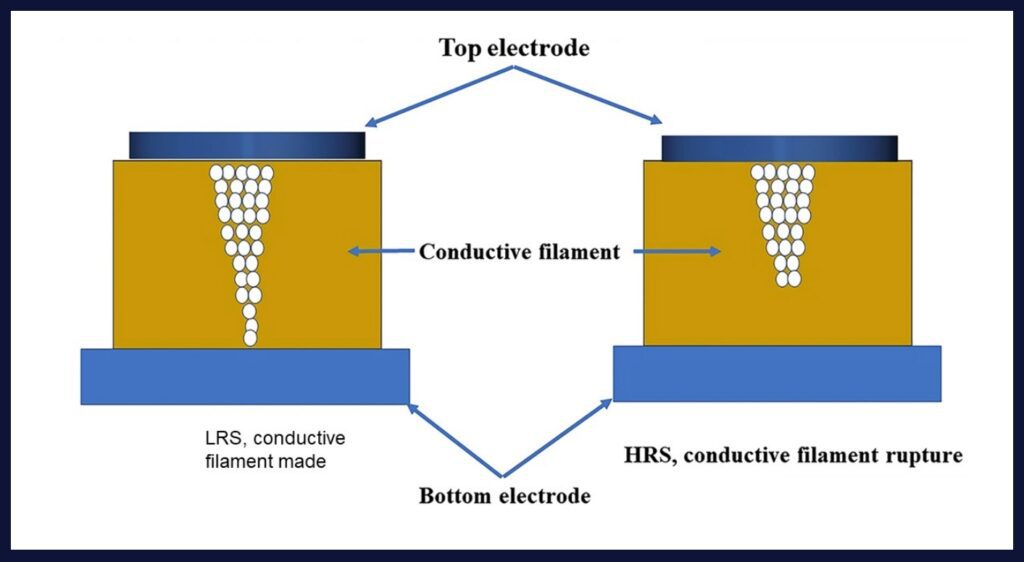How 4DS is different to other ReRAM on the market
Filamentary ReRAM vs 4DS Area Based ReRAM
Most other ReRAM on the market is called filamentary and is different from the 4DS approach in several ways. Filamentary is also based on oxygen or metal ions but in this case a string or filament is formed through the cell. The making or breaking of this filament is what sets or resets the cell in this approach.
This filament formation is concentrated on a very small area in the cell, where the 4DS approach uses the entire cell area. The high concentration in a small area presents long term reliability challenges to filamentary cells and their endurance is compromised as a result. The 4DS approach has a gentler impact on the interface which is why we have demonstrated endurances in the billions.
Second, the filamentary approach generally needs several pulses to form the filament, where the 4DS cell responds instantly to a single shot pulse.
Third, filamentary cells depend on a conductive nanowire that has its own thermal stability concerns. Our cell is area based meaning that the entire cell volume supports the conduction.
And lastly the 4DS write current – being area based – scales with the cell size. Filamentary elements are essentially one, two or more oxygen or metal ‘wires’ through the cell and are independent of cell area, so its write current stays high even with smaller geometries.


4DS PCMO
Area based, lower current density programming, high endurance
Up to 109 Endurance
Analog characteristics
Persistent – extended data retention for energy savings and system fault tolerance
Long retention and short retention can be integrated on same chip
Extremely fast EPIR one-shot response to programming signal – 4.7ns write, well within DRAM window
Ideal for persistent memory backup for Big Data or AI applications
OTHERS – Filamentary
Filament based, high current density, low endurance for reliable cell
Endurance can be as low as 104
Primarily designed for digital use
Non-Volatile – but requires strong error correction or high energy to create multiple filaments
Iterative programming needed for reliable cell
Used as embedded NOR replacement or CXL-based storage memory

Sign up for the latest news from 4DS Memory
Engage with us directly by asking questions, watching video summaries and seeing what other shareholders have to say via our investor hub.
